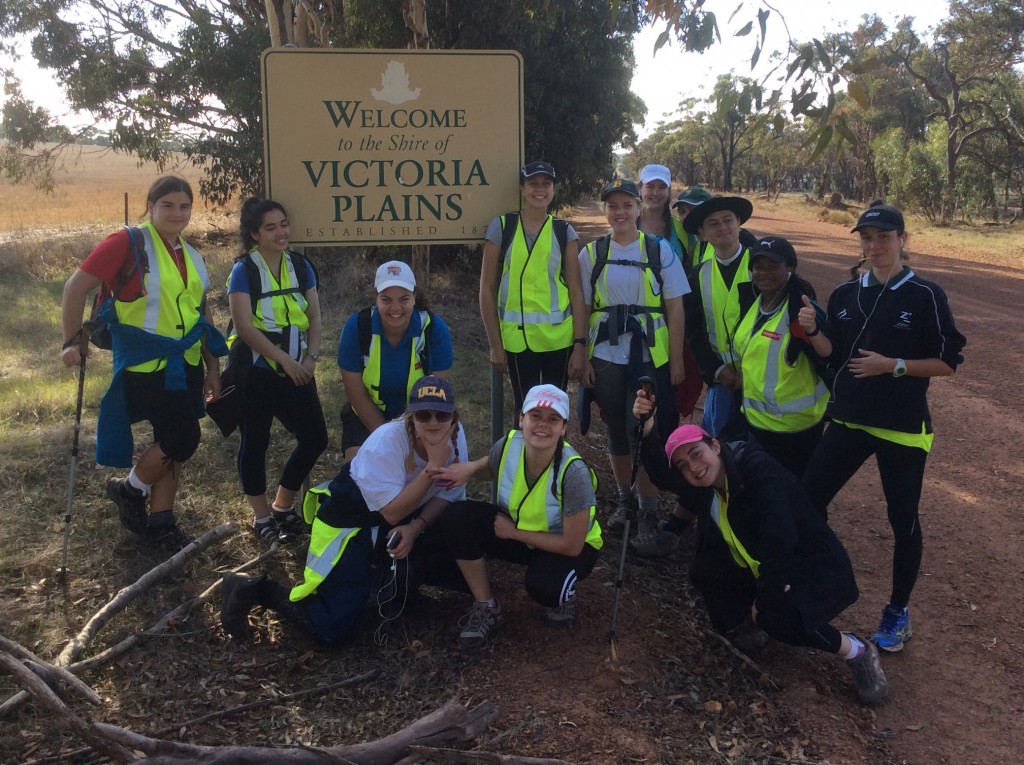
By Melissa Trolio, Mercedes College
A priority for Catholic Schools in Western Australia is to help awaken a sense of the sacred in their students.
The concept of pilgrimage has long been a significant practice of Christians seeking to deepen their faith and sense of the sacred. The physical and spiritual journey is said to be transformational in its nature.
The recently undertaken Camino de Merced, or “Path of Mercy”, saw 15 Year 12 students and ten staff members from Mercedes College and Fr Michael Rowe undertake a six-day, 146km foot journey in search of this life-changing experience.
Modelled on the Camino Salvado pilgrimage to New Norcia that originated in St Joseph’s Parish, Subiaco, the Camino de Merced drew on the experiences of two religious pioneers, Dom Salvado and Ursula Frayne, who travelled together from Ireland to Perth in 1846 to found new missions.
Departing on Thursday, 4 June from Mercedes College after Mass and a blessing from Fr Brennan Sia, pilgrims arrived at New Norcia on Wednesday, 10 June. They were welcomed by friends, staff and Abbot John, who washed the feet of two Camino pilgrims as symbolic gesture.
Each day, there were opportunities for pilgrims to participate in one or more activities that focused on faith enrichment and inner spiritual contemplation. Two forms of Mass were held, the Roman Rite (said in English) and the Latin Rite (said in Latin) – the latter being the rite traditionally practised by Dom Salvado.
There was also had an opportunity to pray the Divine Office in the tradition of both the Sisters of Mercy and the Benedictines who would pray seven times a day.
Furthermore, each pilgrim was provided with a ‘Pilgrim Passport’ that included a simple map of each day’s trail, some space for private reflection and appendices for Mass, prayers and a basic history of the Camino Salvado.
At the end of each day, the pilgrim passport was stamped, recognising completion of a particular leg of the journey. On arrival at New Norcia, pilgrims were presented with the New Norcia seal to add to their passport, signifying the completion of the pilgrimage.
As the pilgrims journeyed on the Camino De Merced trail, they stumbled upon numerous scallop shells left behind by previous pilgrims marking their trail. The scallop shell has a long and rich history as a symbol of pilgrimage, said to have its origins with the Way of St James (Camino de Santiago) in Spain.
Reflecting on his experience, one student stated that praying every morning with his fellow peers was a wonderful experience. “I could see the group becoming more confident in our morning prayer which made me feel very happy as it showed how we had all become closer and more proficient in our daily routine,” he said.
Following the Camino de Merced, the students could not have had a better setting in which to share their story than their Year 12 retreat, appropriately themed “journey”.
Hilaire Belloc, in a 1904 essay called The Idea of Pilgrimage, proclaimed “the volume and depth and intensity of the world is something that only those on foot will ever experience”.
Perhaps some version of this idea is why so many people seem to need the experience of a pilgrimage now more than ever.